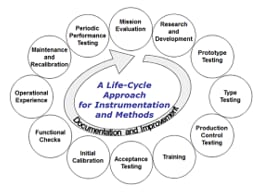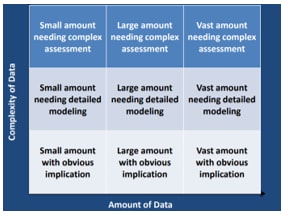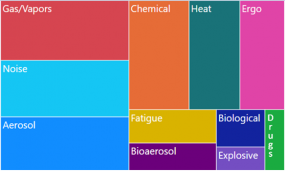Center for Direct Reading and Sensor Technologies
The National Institute for Occupational Safety and Health (NIOSH) Center for Direct Reading and Sensor Technologies (CDRST) focuses on increasing knowledge among leaders, workplaces, and systems to advance the development and use of sensors for occupational safety, health, well-being, and productivity. Specifically, the CDRST:
- Develops guidance documents pertinent to direct-reading methods and sensors, including validation and performance characteristics.
- Develops training protocols for using direct reading instruments in the workplace
- Establishes partnerships to collaborate in the Center’s activities.
- Coordinate a national research agenda for direct reading methods and sensor technologies.
- Develop sensor-relevant guidance documents and training protocols to help others learn how to select, use, and interpret the data of direct reading methods and sensor technologies.
- Partner with industries, end-users, governments, academia, and scientific and professional communities, both nationally and
- internationally. Examples include the Environmental Protection Agency and the American Industrial Hygiene Association (AIHA).
- Foster and participate in research activities for the advancement of science and technology related to direct reading and sensor technologies.
- Promote the development of new methodologies and technologies within NIOSH.
- Trained 120 industrial hygienists during 5 AIHA local chapter webinars on the correct selection and adoption of real-time sensors for aerosols, gas/vapor, fatigue, noise, and wearables.
- Published a revised chapter in the NIOSH Manual of Analytical Methods for measuring respirable aerosol with real-time optical monitors.
- Conducted an online survey among industrial hygienists to assess the current state of use and interest on Direct-Reading instruments and methodologies for occupational health and safety before and after COVID-19.
- Disseminated findings on fatigue monitoring and detection technologies, advanced sensor technologies and future of work, the transformation of sensors data into information and knowledge, and wearables, through blogs, podcasts, webinars, trade journal articles, and peer-reviewed articles.
- Organize a public webinar with external speakers on the transformation of sensors data into actionable information and knowledge for health and safety.
- Deliver an educational session on the use of sensors in the frame of industrial hygiene 4.0 and teach a professional development course on 4-Gas/PID Sensor Technology at the 2022 American Industrial Hygiene Conference and Expo.
- Update the NIOSH Manual of Analytical Methods Chapters relative to portable electrochemical sensor methods, combustible gas monitors, and gas and vapor detection methods.
- Disseminate the results of the Center’s online survey of industrial hygienists through the NIOSH Science Blog, peer-reviewed publications, and conference presentations.

Mention of any company or product does not constitute endorsement by the National Institute for Occupational Safety and Health, Centers for Disease Control and Prevention
The virtual Center for Direct Reading and Sensor Technologies provides scientific and technical leadership to the development and use of 21st century technologies in occupational safety and health. This snapshot shows recent accomplishments and upcoming work.



*The larger the box, the more industrial hygienists using direct-reading instruments (DRIs) for that hazard.
To learn more, visit
www.cdc.gov/niosh/topics/drst/default.html
August 2022
